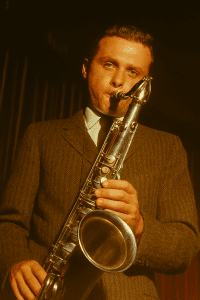Related Jazz on the Tube podcasts
Vic Hobson, barbershop quartet, and the education of Louis Armstrong
https://www.jazzonthetube.com/vic-hobson-and-the-roots-of-louis-armstrongs-music/
“Country” Eddie Durham was one of the key quarterbacks of swing
https://www.jazzonthetube.com/ed/
Ornette and the Texas Hillbillies
https://www.jazzonthetube.com/ornette-in-amarillo/
When Robert Johnson played that Italian wedding in Newark
https://www.jazzonthetube.com/bruce-conforth-and-the-real-robert-johnson/
A look at the raw numbers…
America was mostly rural until the 1920s
Note: The dramatic shift in percentage starting in the late 19th century was contributed to significantly by mass immigration from central and southern Europe which centered on the cities.
Year Urban Rural
1800 6% 94%
1840 11% 89%
1860 20% 80%
1880 28% 72%
1900 40% 60%
1910 46% 54%
1920 51% 49%
1990 75% 25%
2020 80% 20%
Church people
As recently as 1938, three out of every four Americans had a formal affiliation with a local church. As of 2020, it’s now less than one out of two. In the 19th century, African Americans were very active in forming their own churches which became important social and political organizations as well as spiritual ones.
Media evolution
The dates various media technology were first introduced.
Keep in mind it often took years, in many cases decades, for some of these technologies to become commonplace.
1860 – silent films
1877 – recorded music
1895 – radio
1896 – player piano
1906 – audio amplifier
1927 – sound films
1927 – television
1928 – magnetic audio tape
1954 – portable radios/transistor radio
1991 – the world wide web
To put this in context, obviously, there was no such thing as the Internet, TV, or portable music in pre-1920s America, but even things like radio and recorded music were either in their infancy or hadn’t gotten mass popularity traction yet. And there was no such thing as nightclub culture for the overwhelming majority of Americans.
For all practical purposes, in the crucial formative years of America’s music culture, all music was live, acoustic, and without amplification of any kind and the venues for music were: 1) the home, 2) the church, and 3) local social events like parades, community picnics, and dances.
From those humble beginnings, which included a great deal of communication across communities, the foundation of American music was set.
– Ken McCarthy
Jazz on the Tube
P.S. Our unique programming is made possible by help from people like you. Learn how you can contribute to our efforts here: Support Jazz on the Tube
Thanks.






